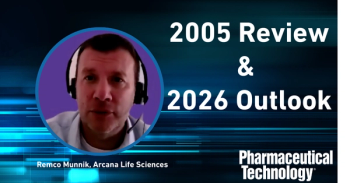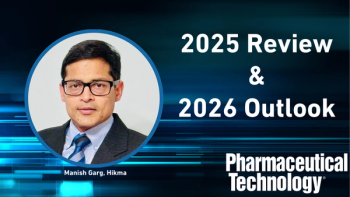
PTSM: Pharmaceutical Technology Sourcing and Management
- PTSM: Pharmaceutical Technology Sourcing and Management-05-06-2015
- Volume 11
- Issue 5
Gauging Change in Europe’s Sterile Manufacturing Market
The past six months has seen some major changes to the sterile manufacturing landscape in Europe. There have been a number of exits and acquisitions that have no doubt grabbed headlines, but has anything really changed?
The past six months has seen some major changes to the sterile manufacturing landscape in Europe. There have been a number of exits and acquisitions that have no doubt grabbed headlines, but has anything really changed?
At an industry level, the demand for sterile injectable manufacturing capability is evident. Industry publications regularly publish indicators of growth in the market. There are many factors driving this demand, including shifting trends towards the development of oncology therapies and the increasing number of large-molecule drugs in development, which require an injectable route of administration. Additional data generated by absolute bioavailability studies to support regulatory submissions where a proven relationship exists between the pharmacodynamics and the pharmacokinetics at therapeutic dose further drive this growth.
Market growth in response to the increasing demand for sterile manufacturing has triggered some high-profile activity in recent months. The acquisition of the Aptuit fill/finish facility in Glasgow by AMRI, for example, although interesting, is unlikely to significantly affect the United Kingdom or European market. This is because neither the number of drug-development companies or the number of manufacturing facilities providing sterile injectable manufacturing services will actually change as a result of the acquisition. There is no doubt this deal is evidence of further consolidation in the aseptic manufacturing space following the acquisition of OsoBio by AMRI in 2014. The wider market, however, still remains relatively fragmented.
Moving forward, we can expect to see other large contract development and manufacturing organizations (CDMOs) prompt further deals of this type as the competitive landscape continues to evolve. Nonetheless, it is unlikely that the market will change significantly, other than clients potentially having fewer options, in that they will have to choose between large one-stop CDMOs or specialist sterile service providers. Specialist contract manufacturing organizations (CMOs), such as Symbiosis, are often more able to provide operational flexibility and move their clients through the clinical development stages more quickly than the larger, more cumbersome CMOs/CDMOs.
Interestingly, given the recent corporate activity by the larger CMO/CDMOs, it appears that the “all-under-one-roof drug-development capability organizational model” (which is similar to the one that Big Pharma had in-house a generation ago and prior to the advent of the more efficient modern drug-development outsourcing model of today) is in danger of being resurrected.
Having said that, as the market continues to develop, it’s not just about organizational size but more about the level of service excellence that a CMO/CDMO can deliver to its customers, including the ability to demonstrate absolute regulatory compliance to the highest standards. Size really doesn’t matter in this sense. For the smaller providers of sterile fill/finish services, the key to growth will be to retain a clear focus on what they are good at and delivering exactly what their customers need.
With the requirements of drug-development projects constantly changing, the freedom to choose from a number of smaller drug-development service providers with true expertise in their field may be the most time-efficient and cost-effective way of not only successfully achieving drug-development milestones, but also of generating value for stakeholders. This trend will continue to drive the growth of specialist, smaller players in the market and ensure healthy competition.
In short, the sterile manufacturing market is certainly changing and will continue to do so, but as ever, customers are faced with the choice of engaging a one-stop-shop service provider or going with a smaller, more specialist, flexible, and time-conscious partner. Ultimately for clients, it’s all about getting to clinical trials in the safest and quickest route possible.
Colin MacKay is CEO of Symbiosis Pharmaceutical Services
Articles in this issue
over 10 years ago
Better Control of the API Supply Chain?over 10 years ago
Big Pharma Feeds Big CMO Growthover 10 years ago
Capsugel Produces DPI Phase 2 Trial Suppliesover 10 years ago
Chinese API Manufacturer Warned for Data Integrity Issuesover 10 years ago
Mylan Recalls Injectables Due to Visible Particulate Matterover 10 years ago
FDA Releases Final Biosimilar Guidanceover 10 years ago
Vetter Serializes First Product for South Koreaover 10 years ago
IDT Biologika Vaccine Facility Recognizedover 10 years ago
SGS Completes Expansion at Mumbai Facilityover 10 years ago
Serialization: Deja Vu All Over Again?Newsletter
Get the essential updates shaping the future of pharma manufacturing and compliance—subscribe today to Pharmaceutical Technology and never miss a breakthrough.




